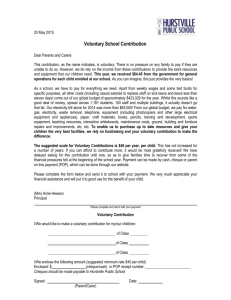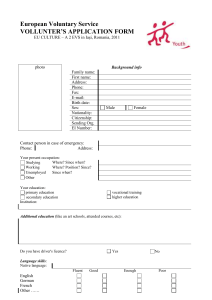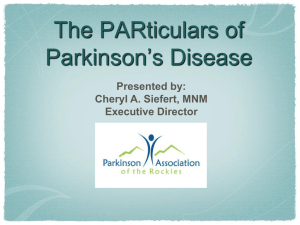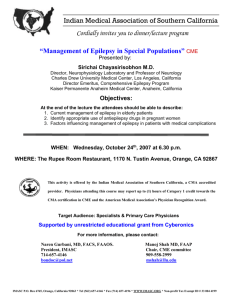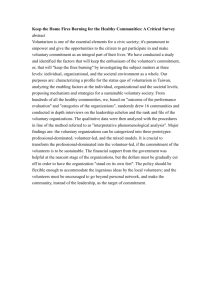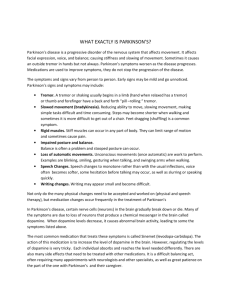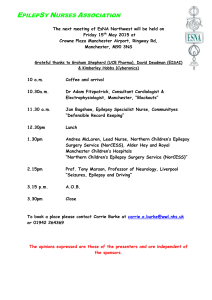Quiz%203
advertisement
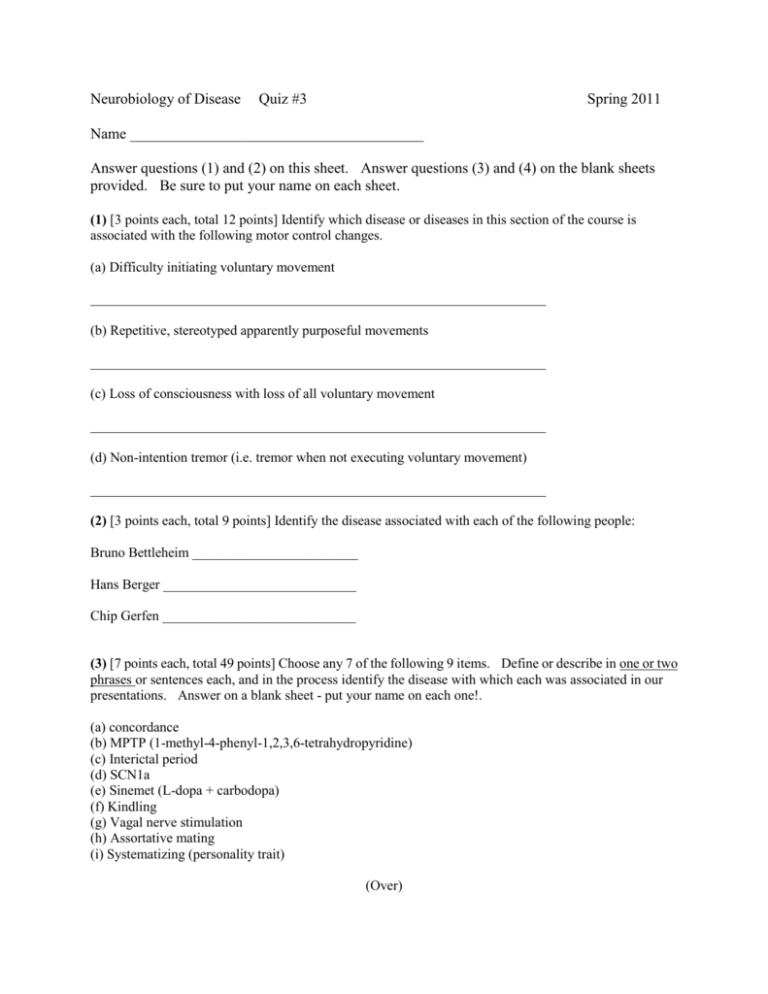
Neurobiology of Disease Quiz #3 Spring 2011 Name _______________________________________ Answer questions (1) and (2) on this sheet. Answer questions (3) and (4) on the blank sheets provided. Be sure to put your name on each sheet. (1) [3 points each, total 12 points] Identify which disease or diseases in this section of the course is associated with the following motor control changes. (a) Difficulty initiating voluntary movement __________________________________________________________________ (b) Repetitive, stereotyped apparently purposeful movements __________________________________________________________________ (c) Loss of consciousness with loss of all voluntary movement __________________________________________________________________ (d) Non-intention tremor (i.e. tremor when not executing voluntary movement) __________________________________________________________________ (2) [3 points each, total 9 points] Identify the disease associated with each of the following people: Bruno Bettleheim ________________________ Hans Berger ____________________________ Chip Gerfen ____________________________ (3) [7 points each, total 49 points] Choose any 7 of the following 9 items. Define or describe in one or two phrases or sentences each, and in the process identify the disease with which each was associated in our presentations. Answer on a blank sheet - put your name on each one!. (a) concordance (b) MPTP (1-methyl-4-phenyl-1,2,3,6-tetrahydropyridine) (c) Interictal period (d) SCN1a (e) Sinemet (L-dopa + carbodopa) (f) Kindling (g) Vagal nerve stimulation (h) Assortative mating (i) Systematizing (personality trait) (Over) (4) 30 points. Choose any one of the following 3 questions, and answer in a short essay of no more than one side of a page. If you gave a presentation since Spring break, you must choose a different disease from the one you presented on. (A) Describe the typical disease progression in autism, including the main behavioral traits and when they are observed during development. Mention two discredited theories of how the condition originates, and describe current thinking about possible causes of the disease. (B) Describe the different kinds of seizure that occur in epilepsy, and some of the known correlates of the disease at the level of cells and molecules. Describe 3 general categories of therapy used to treat epilepsy and give the rationale for each. (C) Describe how the neural defect in Parkinson=s disease leads to the symptoms of the disease, referring to dopamine=s effect on striatal neurons in the so-called direct and indirect pathways. You are not asked to reproduce and explain the entire circuit here; rather, explain the function of each pathway in facilitating or inhibiting movement and make clear how the loss of dopamine affects the function of each pathway.
